2 Tips to Improve Your Post-op Rehabilitation Outcomes
I’ve treated hundreds, if not thousands of postoperative patients in my career. I’m always surprised to hear from others how they progress their patients. When I first got into physical therapy, I was all about protocols. I didn’t have much experience.
I would literally follow it word for word and do my best to match the person to that little piece of paper. Little did I know that I was gravely mistaking! This post will hopefully improve your post-op rehabilitation outcomes.
As I became more comfortable, let’s say 1-2 years in, I got cocky and progressed people based off of their presentation. I almost wanted to show off to THEM that they were doing better than the protocol. This made them want to go faster through the process and all was good…kinda.
Wake up call
Then I began to see people get sore, stiff and regress. So much for being the guru of post-op rehabilitation. I had to reassess my approach.
Fortunately, we had a steady flow of post-op patients at our disposal in Birmingham, AL. Each day, week and month I would get 1, 2 3, 4 new post-op patients a day. I would look for the protocol and fight the temptation to progress too quickly.
Trial and Error
Through experience and chatting with Kevin Wilk (and Mike until he left for the Red Sox in 2005), I began to take a more conservative approach, especially during the 1st 6 weeks after surgery. I realized the protocols were intentionally broken down into phases of rehab for a reason.
Those initial weeks after surgery are all about calming the joint down. Whether it is a knee replacement, an ACL or a rotator cuff repair, they all cause pain and swelling. We truly need to address each circumstance on a case-by-case basis.
There are always the outliers, and you know who they are. The guy that walks in with no crutches 1 day out of surgery and says “I’m here for PT, let’s do this”.
Then you have the guy who gets rolled into PT with a wheelchair and can’t do anything because he’s puking, constipated and cranky. Completely different approaches to rehab for these 2 folks.
The cocky guys need to be held back a bit because you know he’s going to keep pushing it and make his knee swollen. The guy in a ton of pain needs reassurance that you will take good care of him. You just need him to be a big part of the process and get over his fear. You’re almost playing mind games on a daily basis and need to adjust to each individual’s personalities.
Regression to the Mean
The majority of people present somewhere in the middle- can function but in some pain. They know they need to do the PT and you know they need more pain meds, quickly!!
They’ll unwillingly participate in the early process because the doc said so but often not like you for it. Then they’ll thank you later on when they’re moving well and feeling great!
So with that, what 2 things do I think people need to consider when rehabbing a post-op patient?
The 2 most important factors to progress a post-op patient
- Don’t overdo it- less is more
- End feel assessment
Don’t Over Do It- Less is More
As tempting as it is to progress someone quickly through the rehab process, fight the temptation in the early phase of PT. That 1st 4-6 weeks after surgery are critical to regaining homeostasis in the joint.
Dr. Scott Dye talks about this perspective in regards to patients that have patellofemoral pain or anterior knee pain: The pathophysiology of patellofemoral pain: a tissue homeostasis perspective. His research has really shaped how I treat and progress people.
The quicker you can get the joint to ‘calm down’, the better they’ll be able to progress. I utilize range of motion and some modalities such as ice. I can’t overstate it enough that we can make or break an outcome in the first 4-6 weeks.
There’s no need to crank on someone’s knee because the protocol says you must have a certain ROM by a certain time. I’ve found great success with simple passive range of motion seated at the edge of the table at least 2x each visit.
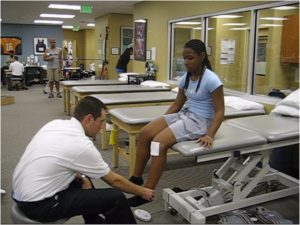
It’s a lot more of a comfortable position for the patient than the dreaded prone ROM. Keep in mind, this puts a stretch through the quadriceps. It becomes an extra barrier that you must get through in order to achieve your motion goals. Plus, the patient feels like a WWE wrestler and may reflexively tighten up in anticipation of pain.
Each patient would get 5-10 minutes of PROM at the beginning and end of each session. No matter how busy I was or how many people were staring at me ‘waiting for their ‘next exercise, they all got 2 ROM sessions.
They looked forward to the range of motion and patiently watched me go from table to table (this was back a couple years ago) knowing they were next up.
This hands-on interaction is very important to develop the PT-patient relationship. This will hopefully blossom in the coming weeks and months as the patient progresses through the process.
I wrote about this previously for our Champion PT blog and I’m sticking to it Power of Touch. I truly believe that this is often missing and a huge complaint from people who end up coming to Champion PT in pursuit of reclaiming their functional goals.
End-feel Assessment
In my opinion, end feel is the single most important aspect of rehab progression a therapist needs to consider. Being able to assess end-feel may be one of those skills that come with experience.
If a post-op rotator cuff is having painful guarding, then the therapist must adjust the process. Maybe it’s the frequency of the HEP, or the actual HEP content, or the patient’s pain control. There are so many factors to consider but the fun part is adjusting and reassessing. It’s a constant game of give and take!!
Commonly, the PT has to dive deeper into the patient’s life to figure out why this end-feel has changed. Often times a past medical history of diabetes can cause increased stiffness.
Also, you’ll find that they stop taking their pain meds because ‘they make me feel funny’ or ‘I have to drive to PT, don’t I?’ Everyone’s response to a surgery is different and it is very important to understand what could affect a patient’s presentation, as complicated as it may seem.
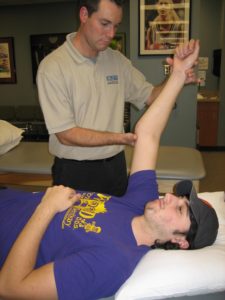
Ultimately, the goal is to get a nice capsular-like end-feel that has the potential to slowly stretch out as you progress the intensity of the ROM.
Assess and adjust each visit
I usually have them increase the frequency of their home exercises or adjust the daily frequency to easy bouts of motion 3-4 times per day. Most people think doing it 1x per day (if you’re lucky) is all they need so they can get credit for doing their ‘homework.’
I’m not afraid to lay the guilt-trip on them and remind them that their outcomes will only be as good as the effort they put into their rehab. This usually gets the point across and we can progress on with the rehab process. This will allow us to quickly gain back the ROM and usually make that end-point not so hard or painful.
Conversely, a Bankart repair in a young athlete should be progressed at a slow speed so the tissue is not ‘stretched’ out. This often results in a nice, capsular endpoint. Should they begin to feel tight, don’t panic! Young adults, say up to 25-30 years old, very rarely get too tight.
Let the process happen, progress appropriately. The excessive ROM gains may cause the patient to have further issues down the road if their instability returns.
Take Home Point…
As much as we think we know about rehab progression after surgery, the only true feedback is from the patient. Listen to them, monitor their response to the rehab and you will be well on your way to getting superb outcomes.

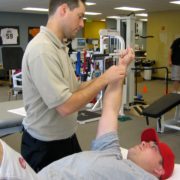
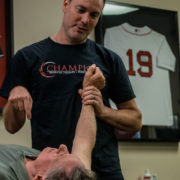
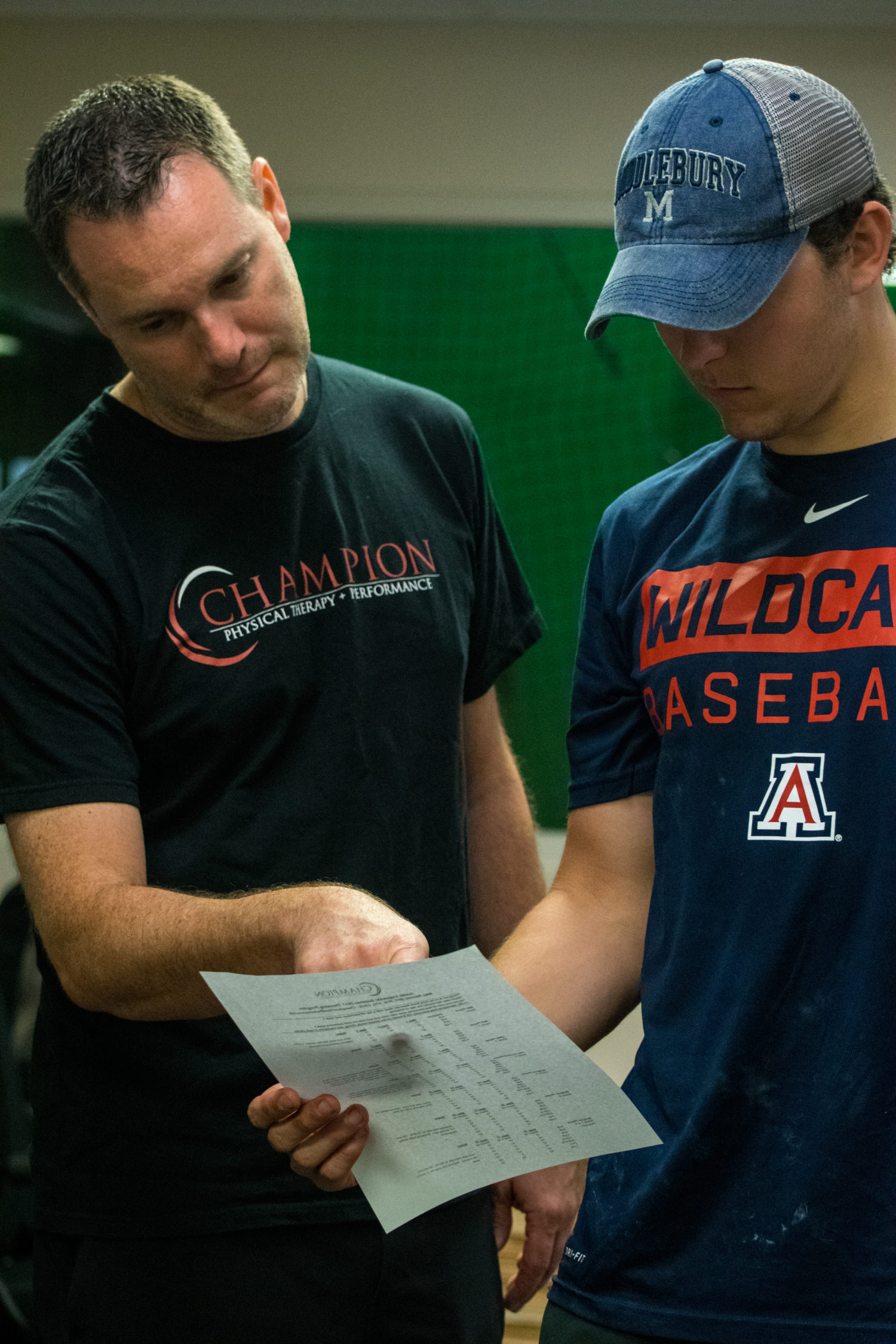
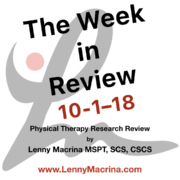

 https://pixabay.com/illustrations/new-year-s-day-beginning-start-2566661/
https://pixabay.com/illustrations/new-year-s-day-beginning-start-2566661/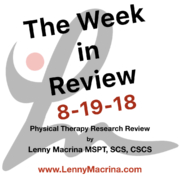

Hey Lenny.
Thanks for a great article. I just came over your site and I will definitely come back!
When you write about appropriate pain control, how much pain is too much? I have great difficulties with when to push and not to push, both with home exercises and during PROM at the clinic. With my colleagues they all say different things. So how much pain is okay on a general basis? Or is this the kind of ‘it comes with experience’ type answer to it?
Best regards from a frustrated new grad..
Hey, Bjornar thanks for the kind words. Yeah, it’s a tricky one. In assessing what I do, I seem to use a variety of ‘gauges’ that guide how hard I push someone into pain. I definitely consider that the surgery is…I’m more aggressive with a TKA vs a rotator cuff repair, for example. Not as worried about the components of a TKA like a delicate RTC repair. I also tend to go slower during the 1st few sessions so I can let the patient trust me and I can learn their pain tolerance. For most, I tend to keep it around 2-3/10 pain but that scale is going to vary widely among people so I don’ weigh that too heavily. Hope this makes sense…and may be a topic of a future post…you got me thinking about this one! Thanks again!